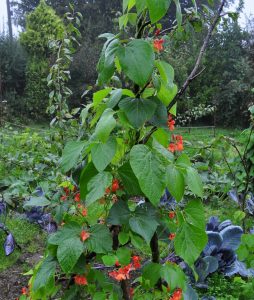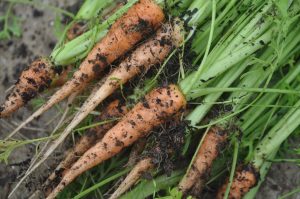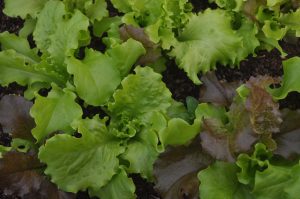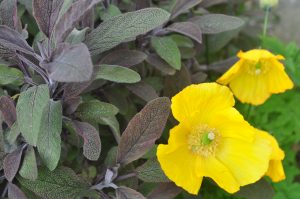How you can be in good company with a more free spirited approach to planting on your plot…
Most gardening books will tell you about the importance of crop rotation ‘blah, blah, brassicas after legumes”… “waffle, waffle, potatoes first…” It’s a planting system that is undoubtedly sensible if a) you’re a market gardener and will be growing produce en masse or b) you prefer to keep planting in uniform blocks or rows. However there is another way…
If, like the majority of gardening folk, you’re growing on a relatively small scale (for yourself and your family), then a higgledy –piggledy approach is definitely worth considering. Rows upon rows of the same thing are all very well and good if that’s what you like but I believe there’s room for more creativity and fun with a range of different types of vegetable and fruits to keep each other company. Especially when you inject herbs and colourful edible planting such as calendula, borage or nasturtiums into the mix. It’s effective and it looks good.
The sheer diversity of this approach also helps keep your soil healthy, avoiding nutrient loss or pathogen build up. Additionally, mixed planting with a range of different sized (and smelling) vegetables and fruit co-existing together seems to also help prevent so many pests in the first place. It also gives produce picking a bit of a foraging edge that I personally find more exciting than block growing alone.
Whether you want to dabble with weaving companion plants into your existing (and planned) veg beds or would like to embrace this approach more ambitiously here are just a few combinations and methods to help you on your merry mix and match way…
 Make it easy peasy for your cabbages
Make it easy peasy for your cabbages
Hungry brassicas generally follow nitrogen fixing legumes in a crop rotation cycle so why not cut to the chase by planting the two alongside each other throughout your patch. This way the likes of cabbage, broccoli and kale can cash in early on this beneficial mineral that their pea or bean neighbours generously release into the soil.
Outwit the pesky carrot fly
It’s a formidable pest the old carrot fly – able to smell out carrots from great distances and the destruction its young cause to your crop can be devastating. To avoid this simply grow your carrots mixed in (and surrounded by) other very strong smelling plants and every time you harvest some mask the trail by crushing the leaves or stalk of its pungent neighbours. Onions work well as do  leeks, garlic, marigolds, fennel and chives.
leeks, garlic, marigolds, fennel and chives.
Not forgetting your fruit trees
They also like a bit of beneficial companionship and chives are supposed to help prevent disease if planted around pear trees. While lavender is also said to help deter codling moths from apples.
Weave in some herbs
For me no veg patch is complete without at least a few of these rather fantastic, flavour and aroma packed plants. Life and indeed food just wouldn’t be the same without them; it would be dull and bland, which is no kind of life at all.
Plus pollinators and beneficial insects love them so will be encouraged onto your plot to lend a helping hand if you grow some; rosemary, thyme and lavender being arguably the best in this regard.
Fennel is another particularly worthy contributor as it’s a popular home for ladybirds, whose larvae are a powerful aphid munching force to be reckoned with.
 Use salad leaves as fillers in-between other planting
Use salad leaves as fillers in-between other planting
Easy to grow and extremely undemanding of their neighbours – they can be planted in any gaps, in and around much hungrier crops.
Let some plants flower and go to seed
It adds a welcome splash of colour and will attract pollinators. Additionally if you allow a few to go on and self-seed (lettuce, rocket, parsley and radish, say) then you will be rewarded with lots of free seedlings in return.
The ‘four sisters guild’
Comprised of sweetcorn, squash, pea and amaranth, each of these plants, with differing heights and demands benefit each other as they grow. It’s a perfect example of how different crops can work in harmony together.
Bees love borage and comfrey and garlic mustard can act as a good pest confuser. Celery harbours beneficial insects and stinging nettles really do have a lot of uses including overwintering ladybirds, so I really wouldn’t weed them all out.
Calendula (aka Marigold) is one of the biggest heroes and as it looks so fantastic all manner of beneficial insects such as ladybirds, hoverflies and lacewings love it. Who can blame them!
Last, but not least, have fun with it and create your own version of edible loveliness – enjoy!
A version of this article first appeared in the April issue of Grow Your Own magazine

